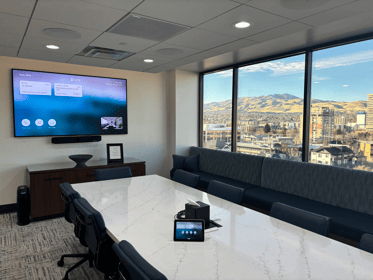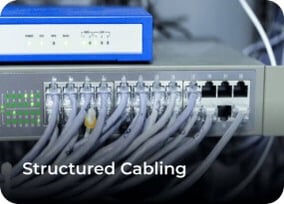
IP technology is replacing traditional methods by allowing for higher audio quality, channel counts and allowing more data to go through the same connection. IP has the potential to change the way people interact with and receive audio. IP-based audio can work with virtually any audio solution, including, but not limited to, background music, intercom functionality, welcome messages and more. It can also be utilized on all scales, from stadiums and theaters to offices and residential spaces.
IP-based audio entails the distribution of digital audio across an IP network, and this system uses network connections to transport audio between devices. There are many benefits to IP systems compared to traditional analog, AES/EBU or other older models. International standards groups like SMPTE, AES, IRT and more have even accepted IP-based audio as a new standard for the industry.
Where traditional audio systems would need a unidirectional cord for each input and output on each device, IP-based audio devices only need to be connected to one bidirectional ethernet cable which connects them to the network. These bidirectional cables contain both the input and output for a source, lessening the amount of physical hardware and wiring you’d need. With IP networking, devices are all connected to the network instead of needing point-to-point inputs and outputs from each device to another to be compatible. Installation is simple, and once they are connected to the network, your devices can now integrate and work hand-in-hand easier than ever before.
This system drastically minimizes the number of cables and conduits to create a minimalist aesthetic. It also eliminates additional physical resources needed to create a comprehensive network of devices. Traditional unidirectional cables are also often twisted, making them more susceptible to noise and audio loss. IP-based audio delivers seamless and powerful noise even over large distances, and by minimizing the amount of resources a system needs, these solutions are also more cost effective.
Almost all devices have IP connections these days, and there is also a lot of software and firmware available to enhance your IP system. IP solutions are part of the larger Internet of Things, which will only keep expanding in the near future. Being based on software, IP-based audio is flexible, easily adaptable and future proof for new technologies and firmware updates. In addition to these benefits for end users, IP-based audio can be remotely monitored by IT staff or AV Planners; with remote monitoring, you can now adjust and monitor your audio system’s settings and scan for issues from any device connected to its network.
Intelligent IP-based audio gives customers more flexibility, scalability and reliability than legacy analog systems. AV Planners can provide you with the tools and expertise you need to start utilizing IP-based audio into your personalized space. Contact AV Planners to learn more about our services. Keep up with the latest news from AV Planners on Facebook, LinkedIn, Twitter and Instagram.
























